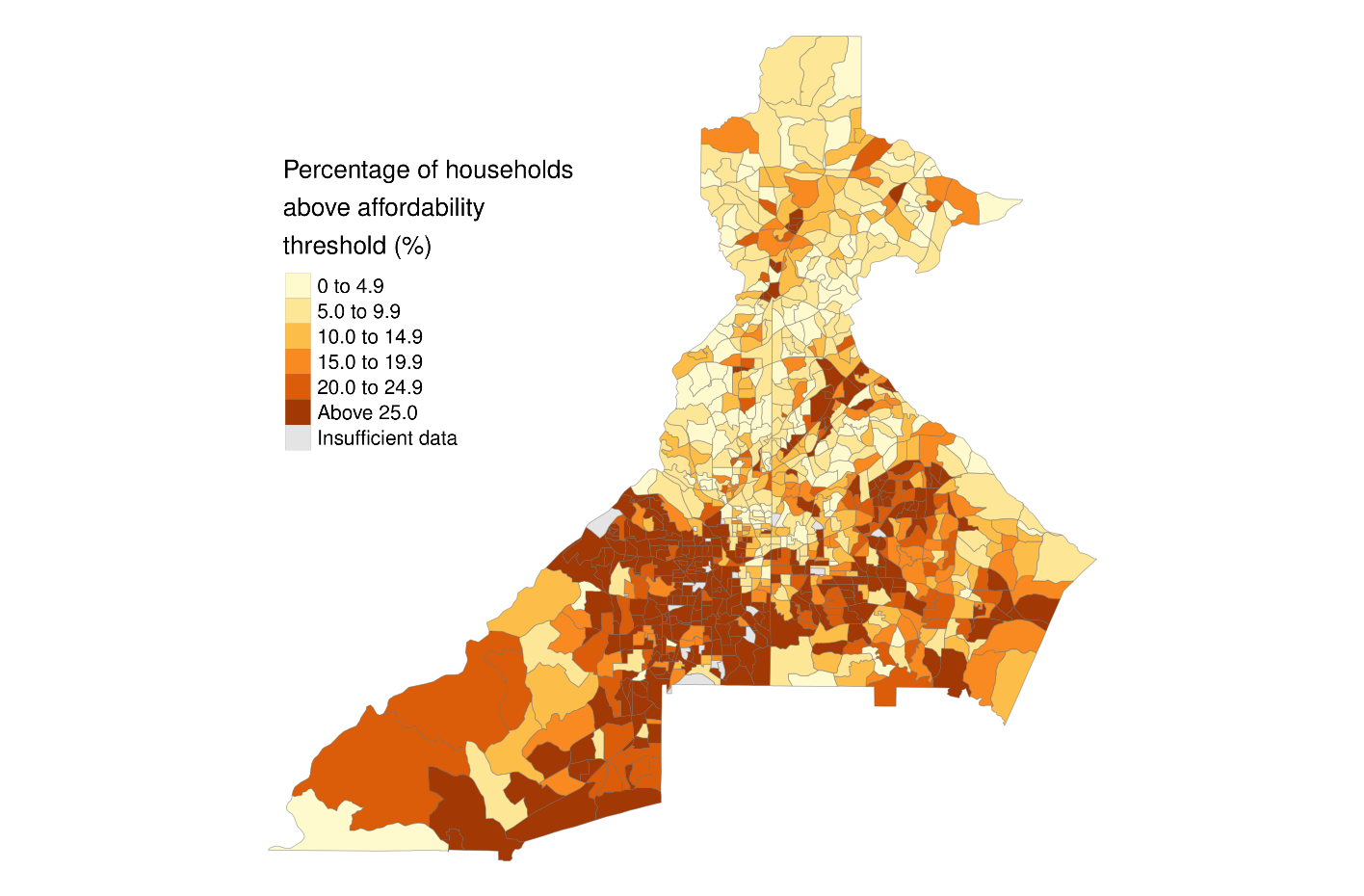Water affordability in the United States
Diego S. Cardoso and Casey J. Wichman. Water Resources Research. 58, e2022WR032206 (paper) (working paper)

Abstract In the US, the cost of water and wastewater services is rising three-times faster than inflation. Over the next 20–25 years, required investments in water infrastructure are estimated to exceed $1 trillion, further increasing service costs. Combined with stagnating income levels, especially for poor households, increased costs will likely aggravate water affordability issues. Here, we document the extent of water affordability concerns in the US across income, geography, and race. We find that 10% of households face water affordability concerns, defined as expenditures on essential water and sewer services greater than 4.5% of annual household income. Households in the lowest income decile pay on average 6.8% of their annual income on water and sewer service. Our estimates are based on a large-scale data set on water and sewer rates matched with Census block-group-level socioeconomic characteristics and covering approximately 45% of the US population. We demonstrate that using median household income at the county level drastically understates the extent of the water affordability problem. Additionally, we find that the number of households facing affordability concerns is positively associated with the proportion of black residents and negatively associated with Hispanic residents even after conditioning on prices and poverty levels. Lastly, we show that self-sufficient water affordability policies that provide a lump-sum rebate to low-income households and are paid for by income taxes redistribute the burden borne by low-income customers with fewer unintended consequences for non-essential consumption than policies that change marginal incentives for water and sewer consumption.
